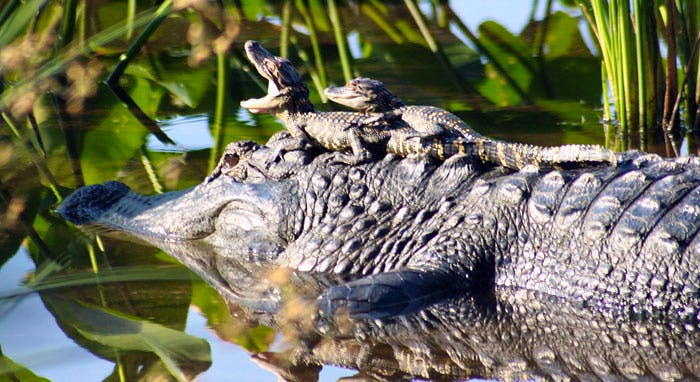Loxahatchee National Wildlife Refuge is one of the last remaining protected remnants of the northern Everglades left in Florida.
It’s a national treasure, providing ideal feeding and nesting habitat for more than 250 species of birds, including the largest colony of wading birds in the Everglades. Acting as a natural filter, the refuge also provides clean water for communities in South Florida. But now it’s in danger of being lost forever.
Loxahatchee isn’t like most other refuges. It is administered by the U.S. Fish and Wildlife Service (FWS) through a lease agreement with the South Florida Water Management District, which manages drinking water supplies and flood control in south Florida. Now the water management district wants to rescind the lease from the federal government, effectively closing the refuge for good.
The District contends that FWS has done a poor job at raising funds from Congress to manage invasive plant species on the refuge, as stipulated in the lease agreement. These non-native plants, such as melaleuca trees and Old World climbing fern, damage the dwindling Everglades habitat. Yet the state has done a poor job itself of controlling invasive species in its surrounding Water Management District Areas. In fact, Loxahatchee became infested with Old World climbing fern from surrounding state-owned lands. Revoking the lease agreement will not solve this regional invasive species problem.
Many believe that the state’s true interest is to regain control of the refuge to manage it solely for water control and storage. The refuge is a Water Conservation Area (WCA), but is managed as a national wildlife refuge as per the agreement between the U.S. Fish and Wildlife Service and the South Florida Water Management District. Without the refuge designation, Florida would then be free to pump more water into or out of Loxahatchee and send it downstream for development or agricultural use.
As a national wildlife refuge, Loxahatchee is maintained first and foremost to protect birds and other wildlife and their habitats. In contrast, protection is not guaranteed for wildlife in a WCA. If too much water is transferred into the area, the wetlands could become deeper — too deep to be useful habitat for wading birds that need shallow water to hunt. If too much water is drained out of the area, it could kill plants that birds depend on for shelter, and the mollusks and fish that the birds need to survive.
The Everglades, so named by early explorers for the grassy area (glades) that seemingly extended forever into the horizon, was once a massive network of forests, prairies and wetlands, a “river of grass” that flowed from the middle of Florida near Orlando, all the way down to the southern tip of Florida Bay. Today, while much of this ecosystem has been lost, the Loxahatchee National Wildlife Refuge is an island unto itself of protected Everglades habitat. We can’t risk losing this precious part of an ecosystem that is so vital to Florida’s natural heritage.
That’s why we are asking you to contact Florida Governor Rick Scott and tell him to keep Loxahatchee National Wildlife Refuge exactly that – a refuge for the wildlife that depend on it.
The attempted takeover of Loxahatchee is just one more attack on our public lands systems. Great places like the Everglades belong to all Americans and should be protected for current and future generations. Now, more than ever, we must act to ensure that public lands remain in public hands.
This blog is part of an ongoing series on our National Wildlife Refuge system and the vital role that refuges play in protecting species and providing crucial habitat for wildlife. Check in regularly to hear from our field teams, policy experts and staff on Capitol Hill about new developments and continuing threats to these wild places and what you can do to help.



